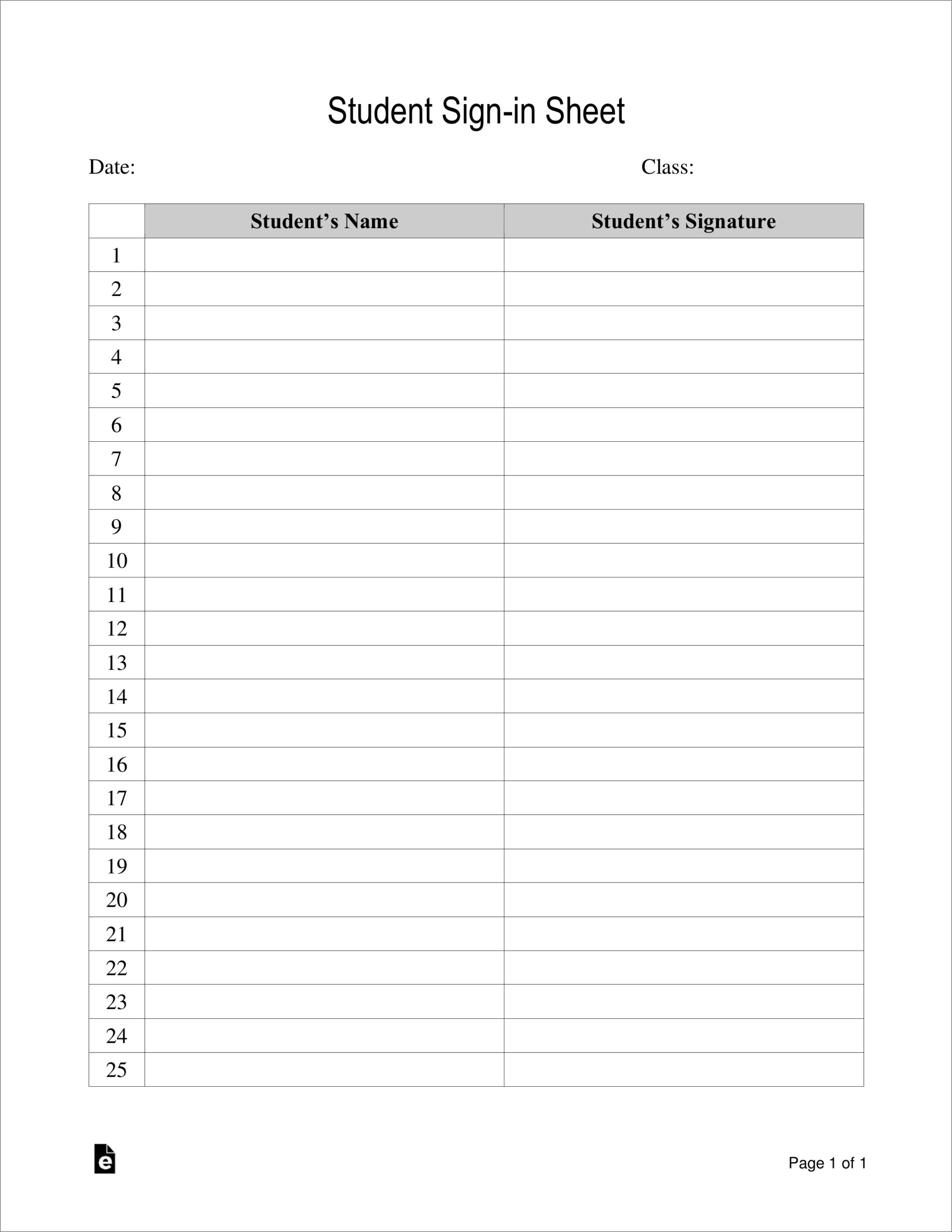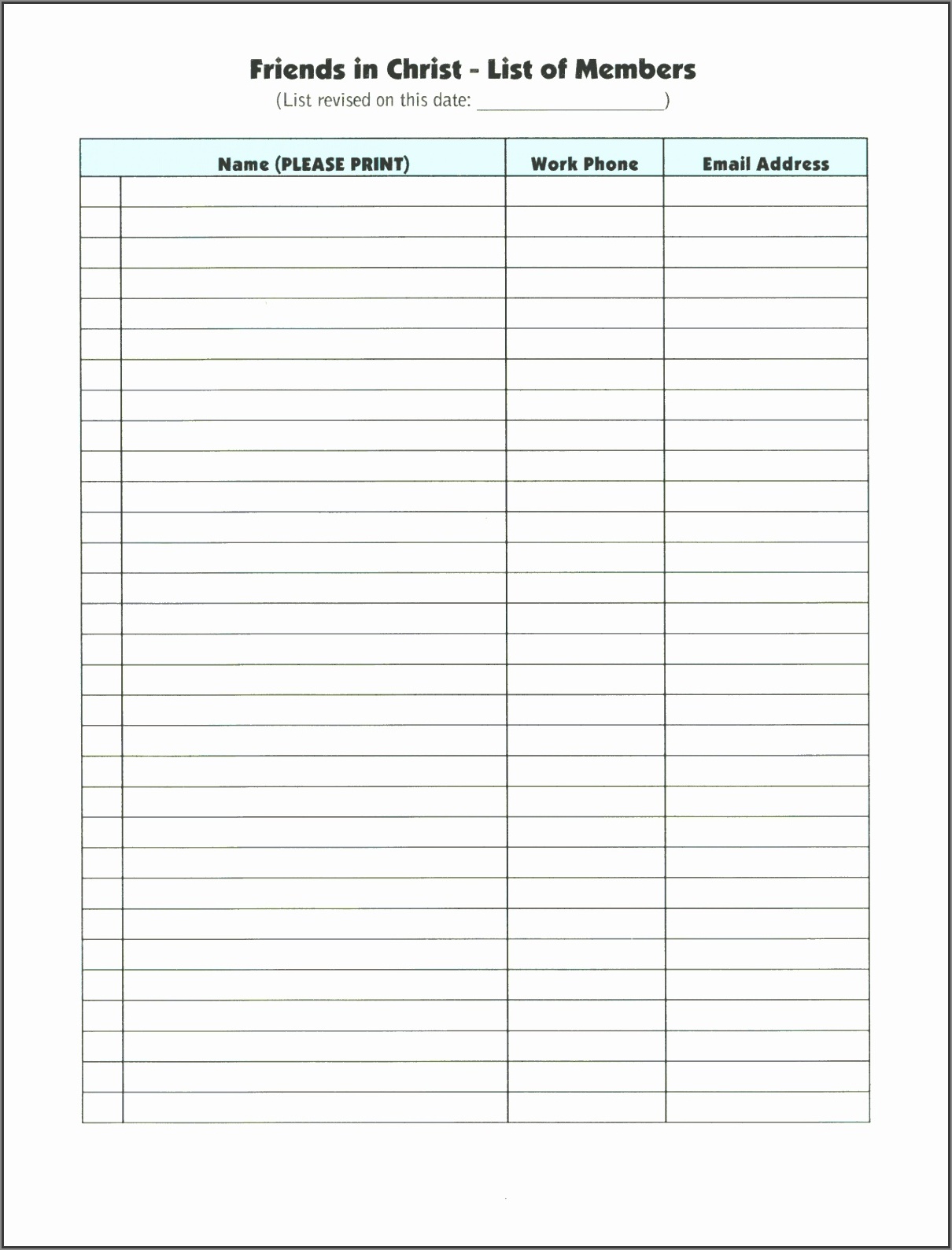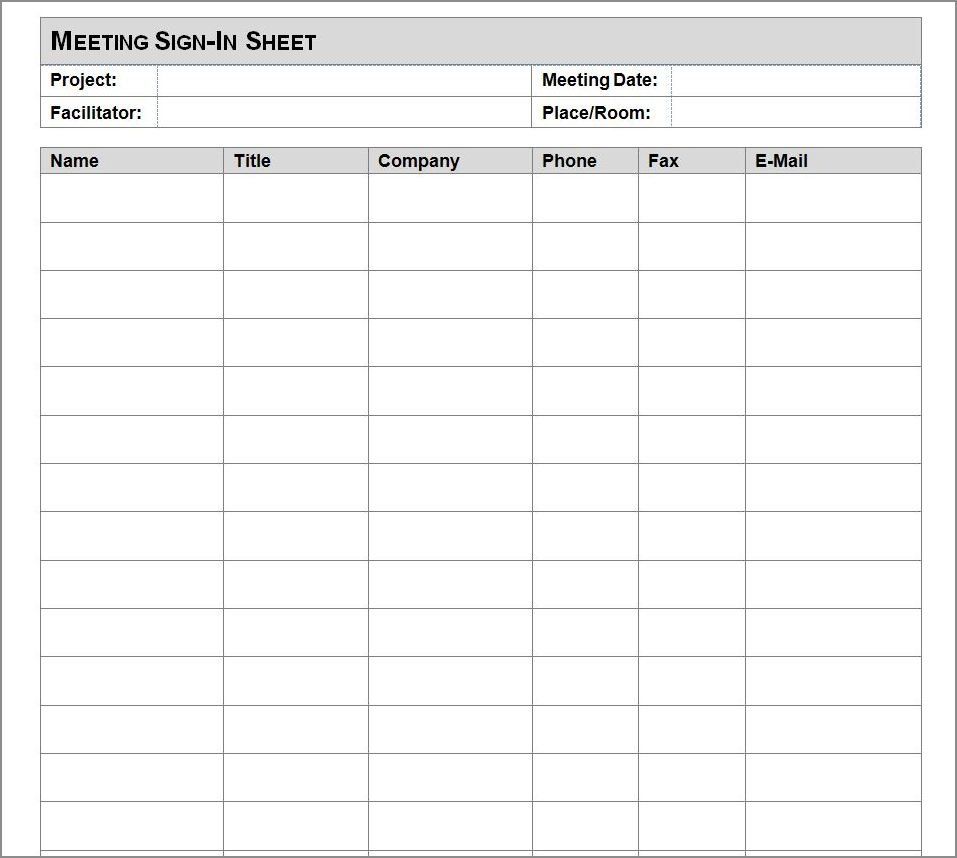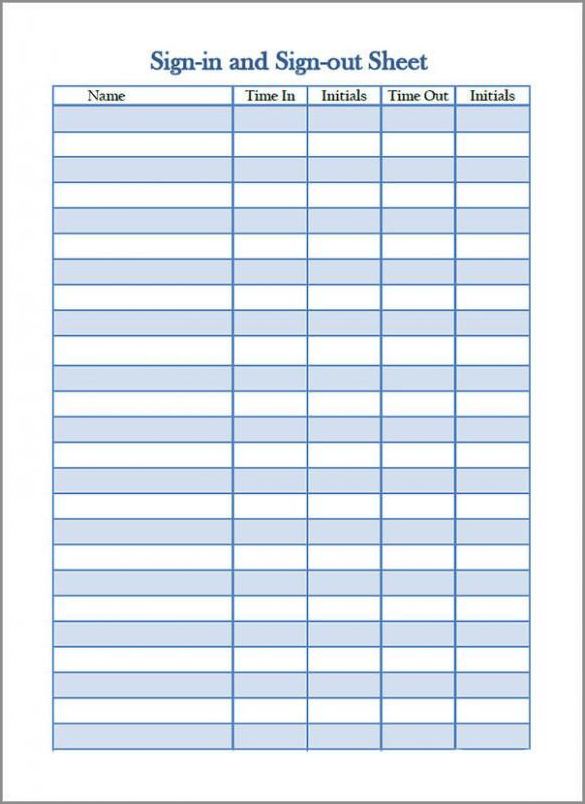When entering a new environment, whether it be a classroom, a meeting, or an event, there is often a requirement to sign in. This simple act of recording one’s presence has become a common practice in various settings. The sign-in sheet serves as a valuable tool for organizers, providing them with crucial information and facilitating smooth operations.
In this article, we will explore the purpose and uses of a sign-in sheet, its benefits, and how to effectively implement it in different scenarios.
What is a Sign-in Sheet?
A sign-in sheet is a document used to record the attendance or presence of individuals in a specific location or event. It typically includes fields for individuals to write their names, contact information, and sometimes additional details depending on the purpose of the gathering. The sheet may be physical, such as a paper form, or digital, using online platforms or software.
Sign-in sheets are widely used in various settings, including schools, businesses, community centers, conferences, workshops, and volunteer events. They serve multiple purposes, ranging from ensuring security and tracking attendance to collecting data for future communication and analysis.
Why Do We Use Sign-In Sheets?
Sign-in sheets serve several important functions that benefit both organizers and participants. Let’s explore some of the main reasons why sign-in sheets are used:
1. Attendance Tracking and Security
One of the primary purposes of a sign-in sheet is to track attendance and monitor who is present in a particular location or event. This information is essential for security purposes, especially in settings where access needs to be controlled or restricted. By requiring individuals to sign in, organizers can ensure that only authorized individuals are present and quickly identify any potential security breaches.
2. Communication and Contact Information
A sign-in sheet provides organizers with a convenient way to collect participants’ contact information. This data is valuable for future communication, such as sending updates, reminders, or follow-up materials related to the event or gathering. Having accurate contact details allows organizers to maintain a strong connection with participants, fostering engagement and facilitating ongoing interaction.
3. Analysis and Planning
Sign-in sheets can also serve as a valuable source of data for analysis and future planning. By collecting information such as demographics, affiliations, or preferences, organizers can gain insights into their audience and make informed decisions for future events. This data can help identify patterns, target specific groups, and tailor future offerings to better meet the needs and interests of participants.
4. Compliance and Legal Requirements
In certain situations, sign-in sheets may be necessary to fulfill legal or compliance requirements. For example, educational institutions may need to keep records of student attendance for regulatory purposes. Similarly, workplaces may require employees to sign in as part of their timekeeping and payroll processes. Sign-in sheets provide a paper trail that can be used to verify compliance and address any legal or regulatory inquiries.
5. Resource Allocation and Planning
In scenarios where resources need to be allocated or planned, sign-in sheets can be helpful. For instance, in a workshop or training session, organizers can use the sign-in sheet to determine the number of materials, handouts, or seats required. This information ensures that resources are sufficient for the number of attendees, preventing wastage or shortages.
How to Create an Effective Sign-In Sheet
Creating a well-designed and user-friendly sign-in sheet is crucial to ensure maximum participation and accurate data collection. Here are some tips for creating an effective sign-in sheet:
1. Determine the Required Information
Start by determining the essential information you need to collect from participants. This typically includes their names, contact details, and any additional fields relevant to your specific context. Avoid asking for unnecessary or sensitive information that may discourage participation or violate privacy regulations.
2. Use Clear and Concise Language
Make sure your sign-in sheet uses language that is easy to understand and fill out. Use simple instructions, and avoid using jargon or technical terms that may confuse participants. Consider providing examples or sample entries to clarify any potential confusion.
3. Choose the Right Format
Decide whether a physical or digital sign-in sheet is more suitable for your needs. Physical sheets may be more appropriate for small gatherings or settings where technology may not be readily available. Digital sign-in sheets offer the advantage of easy data collection and analysis, especially when dealing with a large number of participants.
4. Ensure Adequate Space
Provide sufficient space for participants to write their information clearly and legibly. Crowded or cramped fields may lead to illegible entries, making data collection challenging or inaccurate. Consider using larger fonts and providing ample space between fields to enhance readability.
5. Include a Privacy Statement
Respect participants’ privacy by including a brief privacy statement on the sign-in sheet. Assure them that their information will be kept confidential and will only be used for the intended purposes. This statement helps build trust and encourages individuals to provide accurate and complete information.
6. Make it Accessible
Ensure that the sign-in sheet is easily accessible to participants. Place it in a visible and convenient location, preferably near the entrance or registration area. Provide pens or writing utensils to eliminate any barriers to participation and encourage individuals to sign in upon arrival.
7. Regularly Review and Analyze the Data
After the event or gathering, take the time to review and analyze the data collected through the sign-in sheet. Look for trends, patterns, or areas for improvement that can inform future planning and decision-making. Consider using spreadsheet software or specialized data analysis tools to streamline this process.
Examples of Sign-in Sheets




Here are a few examples of how sign-in sheets can be used in different settings:
- Example 1: School Open House – A sign-in sheet is used during a school open house to record the names and contact information of parents or guardians attending the event. This information allows the school to follow up with important updates and maintain open lines of communication with families.
- Example 2: Conference Registration – A digital sign-in sheet is used at a conference registration desk. Attendees can quickly enter their details using a tablet or computer, streamlining the registration process and reducing waiting times.
- Example 3: Volunteer Event – A paper sign-in sheet is utilized at a volunteer event to track the attendance of volunteers. This information helps organizers ensure that all necessary tasks are covered and allows them to recognize and thank volunteers for their contributions.
- Example 4: Workplace Attendance – An electronic sign-in sheet is implemented in a workplace to track employee attendance and hours worked. This data is useful for payroll purposes, ensuring accurate compensation and adherence to labor regulations.
Conclusion
The sign-in sheet is a versatile tool that serves various purposes across different environments. Whether it’s for tracking attendance, collecting contact information, or complying with legal requirements, sign-in sheets play a vital role in ensuring the smooth operation of events and gatherings. By creating an effective sign-in sheet and utilizing the data collected, organizers can enhance their planning, improve communication, and foster meaningful connections with participants.
General Sign-in Sheet Template Excel – Download
